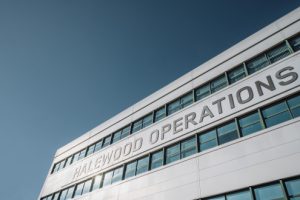Lunar Society Lecture: Adonis on HS2

This is an extended extract from Lord Adonis’ Lunar Society Lecture. Here, the former transport secretary makes the case for high speed rail.
Let me take the benefits of HS2 in turn, starting with speed and connectivity which are intimately connected.
First, speed. Euston will be 49 minutes from the proposed new Fazeley Street high-speed station, to be built on largely derelict land right next to New Street, down from 82 minutes now. However, journey times to Birmingham from London’s West End and business centres, and Heathrow, are cut proportionately by far more than this because of a transformational new element of connectivity: the proposed interchange with London’s £16bn east-west Crossrail line at Old Oak Common, ten minutes west of Euston, at which all HS2 trains will stop. Using this interchange, Birmingham city centre to Heathrow will be about 45 minutes, down from about two hours now via Euston, the tube and Heathrow Express; Birmingham to the City will be about 50 minutes, down from about an hour and 50 minutes via Euston and two tube rides; and Birmingham to Canary Wharf will be an hour, roughly half the two hours it currently takes via Euston and the tube.
However, all that is just about connections south. Connections north and east are equally transformed by HS2. Birmingham’s rail – and indeed road – connections north and east currently range between the poor and the terrible. Birmingham to Nottingham is a mere 56 miles by rail; the average journey time is 1 hour 14 minutes. Manchester to Birmingham is 82 miles – 1 hour 30 minutes. Manchester to Leeds is 90 miles – 2 hours. All these journey times are halved or better by HS2.
It is not just that journey times north and east are shorter by high-speed rail. Here again, there is a transformation improvement in connectivity for Birmingham because of the deliberate route design of HS2. At present, although Birmingham is at the heart of England, it is in rail terms a mere branch line off the West Coast Main Line. Fast trains to Manchester, Liverpool and Glasgow all branch off the WCML at Rugby, without stopping even there. And the WCML is itself only one of three main lines north from London – the other two being the Midland Main Line to the East Midlands and Sheffield, and the East Coast Main Line to Leeds, York, the north-east and Edinburgh. All these lines were built by independent Victorian railway companies preoccupied with their own fast routes from London to whichever cities they were seeking to reach; which is why connections between the cities of the Midlands and the north are so bad – with Birmingham’s geographical position is of little advantage when, in effect, none of the main lines going north connect directly with Birmingham at all.
HS2 completely redraws this inter-city rail map. Instead of being at the end of an inter-city branch line, Birmingham International becomes both the first stop on HS2 going north to everywhere; it is also the junction for the routes which then diverge north-west to Manchester, Liverpool and Glasgow, and north-east to the East Midlands, Sheffield, Leeds, Newcastle and Edinburgh. Britain’s second city becomes – for the first time – a national rail hub. And not just a high-speed rail hub: Birmingham International is a hub incorporating Birmingham airport, the M42, the NEC and the existing West Coast Main Line. This is a fundamental redrawing of the Victorian railway map of Britain, to Birmingham’s advantage. Birmingham Airport becomes closer to Heathrow and much of London than Stansted.
Having said all this about speed and connectivity, HS2 is justified on capacity grounds alone, and it is important to make this argument when pressing Birmingham’s case. Capacity constraints on the West Coast Main Line, already serious, become acute in the 2020s. If HS2 is not ultimately built through to Manchester and Leeds, all four existing main lines going north – not only the West Coast Main Line, but also the Chiltern line, the Midland Main Line and the East Coast Main Line – will need to be upgraded over coming decades, at a cumulative cost far greater than HS2. No crystal ball is required. £10bn has just been spent on a a hugely disruptive ten year upgrade of the West Coast line. Analysis for the Department for Transport shows that to upgrade existing lines to provide barely two-thirds of the extra capacity provided by the initial section of HS2 from London to Birmingham will cost more (£20bn against £17bn) than the high-speed alternative.
There is a big debate about the economic benefits of high-speed. Bizarrely, some people have even suggested that it might suck further economic activity into the south-east – views which have even been expressed by some in the West Midlands, which is a telling commentary on the lack of confidence there is in the regional economy. In fact, the evidence is of a fairly clear and positive relationship, among towns and cities, between journey time to London and productivity. By bringing Birmingham closer to London, its productivity should rise, which is good for jobs, good for business and potentially transformational for Birmingham’s future.
I would add, from my international visits to understand the impact of high-speed rail in Europe and Asia, that I have not yet met the leader of a city who has got a high-speed line who wishes they hadn’t.







